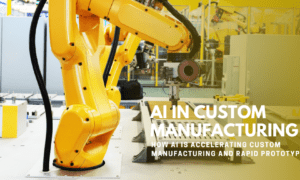Table of Contents:
1. Understanding the Need for Custom Software Solutions for Recruitment and Shift Management
1.1 Importance in Modern Business
1.2 The Benefits of Custom Recruitment and Shift Management Software
2. Key Features to Include when Developing Custom Software
2.1 Recruitment Features
2.2 Shift Management Features
3. The Development Process
4. Challenges in Developing Recruitment and Shift Management Software
5. Best Practices for Custom Software Implementation
6. How Magora can Help
Finding the right talent is hard. Managing shifts? Even harder. For businesses of all sizes, recruitment and scheduling can become a logistical nightmare. That’s where custom software comes in. It simplifies the process, cuts down on manual tasks, and helps you focus on what really matters – growing your business.
In this guide, we’ll walk through everything you need to know about custom software development for recruitment and shift management. Why custom software? Because no two businesses are the same. Off-the-shelf solutions might work for some. But more often than not, you end up with tools that don’t quite fit your needs. Custom software gives you flexibility. It evolves as your business grows. And most importantly, it’s designed around your unique requirements, making recruitment and scheduling a breeze.
So, let’s get into how you can create software that improves efficiency and gives your team more time to focus on their core responsibilities.
Understanding the Need for Custom Software Solutions for Recruitment and Shift Management
Hiring the right people and managing their shifts is key to any successful business. If you get these wrong, everything else can quickly fall apart. That’s why more companies are turning to software solutions to make the whole process easier.
Importance in Modern Business
Every minute counts when you’re running a business. Manual processes in recruitment and shift management? They open the door to mistakes. And those mistakes can be costly. Double-booking employees, missing out on top candidates, or spending hours on tasks that could be automated – these are common headaches when relying on outdated methods.
But with the right software, you can streamline everything. You can automate the hiring process. Sort through applications faster. Schedule shifts without the back-and-forth. This means fewer errors, faster results, and more time to focus on the bigger picture.
And let’s not forget about your team’s wellness. When shifts are managed smoothly, employees are happier. They know when they’re working. They get better shifts because the system is more balanced. This boosts morale and makes your workplace run more efficiently.
The Benefits of Custom Recruitment and Shift Management Software
Custom business process software gives you control. It’s built for your business, not someone else’s. That means you get exactly what you need and nothing that you don’t.
- First up, time-saving. Instead of spending hours manually checking CVs, scheduling interviews, and juggling shifts, the software does the heavy lifting. Automations through AI implementation speed things up, so you can focus on getting the best out of your team.
- Next, better resource allocation. With a clear overview of available talent and shift needs, you can allocate your staff more effectively. No more last-minute scrambling to cover gaps. The system helps you plan ahead.
- Then there’s enhanced communication. No one likes getting calls at odd hours about their shifts. With software, your team can access their schedule from anywhere. They can see updates in real-time and request changes or swap shifts without needing to speak to a manager. It’s easy and fast.
- And finally, compliance. When you’re managing a large team, keeping track of labour laws can be tricky. In the UK, for example, the Working Time Regulations Act (1998) sets limits on working hours and guarantees employees breaks and paid holidays. Good software ensures you’re always on the right side of the law by flagging issues before they become problems.
Key Features to Include for Recruitment and Shift Management Software

The right features make all the difference. Each function needs to work together to streamline your processes and minimise errors. Here’s a breakdown of the essential tools your software should include:
Recruitment Features
- AI Integration
AI streamlines recruitment by automating repetitive tasks, speeding up resume selection, and identifying top candidates based on criteria. Large Language Models (LLMs) can further enhance this by analysing candidate responses, generating insights from interview transcripts, and even assisting with personalised communication throughout the hiring process. Integrating AI into recruitment software reduces bias, improves decision-making, and accelerates hiring, helping you find the right talent faster.
- Automated Job Posting and Applicant Tracking
With just a few clicks, you can post job openings across multiple platforms. An applicant tracking system (ATS) lets you organise applications, track progress, and filter candidates without endless paperwork.
- Resume Parsing and Candidate Matching
AI-powered resume parsing pulls out key information quickly. No more sifting through endless resumes. Combine that with candidate matching, and you’ll find the best fit in a fraction of the time. Algorithms assess skills, experience, and qualifications to ensure you don’t miss out on a great hire.
- Interview Scheduling and Communication Tools
Integrated calendars make scheduling easy. Automated reminders ensure both you and the candidates are on the same page. Plus, built-in communication tools help you stay connected, whether by email, text, or in-app messaging.
- Analytics and Reporting
Data is key. Tracking recruitment metrics like time-to-hire, cost-per-hire, and candidate drop-off points gives you valuable insights. This allows you to adjust your strategies, make informed decisions, and improve the entire hiring process.
Shift Management Features
- AI Chatbot Integration
AI-powered chatbots simplify shift management by allowing employees to request time off, swap shifts, or check schedules through natural language, meaning they can type or speak just like they would with a person. These chatbots provide instant responses, automate routine HR tasks, and send reminders, enhancing communication and streamlining processes. For example, chatbots used in the real estate sector is a great example of how AI can facilitate business processes. But it can be used in nearly every industry, automating interactions and streamlining workflows.
- Shift Scheduling and Assignment
An intuitive scheduling tool lets you assign shifts in minutes. You can easily adjust when needed, whether it’s swapping shifts, handling last-minute changes, or accommodating time-off requests.
- Time Tracking and Attendance
With real-time tracking, employees can log their hours through the app. You get accurate attendance records, and your team can see their shift history without asking.
- Notifications and Alerts
Employees get reminders about upcoming shifts or any changes to their schedules. This feature helps keep everyone on track and reduces the chance of no-shows.
- Compliance Management
Staying compliant with labour laws is non-negotiable. The software should help you schedule shifts in line with regulations, including breaks and overtime. This reduces the risk of penalties and ensures your business runs smoothly.
- Integration Capabilities
Finally, the software should connect with payroll, HR platforms, and communication tools. This ensures all your data is in sync, saving you time and reducing the chance of errors.
The Development Process
Creating recruitment and shift management software that truly works for your business takes more than just good coding from some software development company. It requires a thoughtful, step-by-step approach.
1) Requirement Gathering
Any custom software development company should start by understanding your business needs. Together, engage with your stakeholders to identify their challenges with current systems and their expectations for a new solution.
Product Discovery is key here. It’s not just about immediate needs but also future requirements. Map out essential features and user flows to create a tool that serves everyone effectively.
2) Choosing the Right Technology Stack
Next, consider your tech stack, which impacts speed, scalability, and user experience. For HR software, popular choices include React JS and Node JS for web applications. For mobile apps, use Kotlin for Android or Swift for iOS. These technologies ensure a reliable and practical software foundation.
3) Designing the User Interface
Conduct user interviews to gather insights on their pain points and workflows. Use this feedback to create an intuitive design with easily accessible buttons and simple actions. The easier it is to use, the more likely your team will embrace the software.
4) Backend Development
Next is backend development, where you build the engine that powers the software. The backend must handle large data volumes, manage user authentication, and integrate with payroll and HR platforms. The goal is to create a robust, secure backend that efficiently manages data and users.
5) Testing and Quality Assurance
Finally, rigorous testing is essential. Testing and Quality Assurance (QA) ensure that every feature works correctly. Start with UAT (User Acceptance Testing), where real users evaluate the software. Then, conduct automation testing to identify bugs and verify feature performance. Security testing is also important, especially for software that handles sensitive employee data.
Challenges in Developing Recruitment and Shift Management Software

Challenges in Developing Recruitment and Shift Software
Creating effective recruitment and shift management software comes with its own set of hurdles that can impact the success of your project.
- Data Security and Privacy
Protecting sensitive employee data is very important. With increasing regulations like the General Data Protection Regulation (GDPR) in the UK, ensuring data security is non-negotiable. Developers must implement robust encryption methods, access controls, and regular security audits to mitigate risks.
- Scalability
As businesses grow, their software needs to adapt. Building scalable software ensures it can handle increased data loads and user activity without performance issues. This requires thoughtful architecture from the start, allowing for seamless upgrades and expansions.
- Customisation
Every business has unique requirements. Balancing the need for custom features with the complexity of development is a challenge. While tailored solutions can provide significant advantages, they often involve longer development times and higher costs. Clear communication of priorities is essential.
- Compliance
Staying compliant with changing labour laws and regulations, particularly in the UK, can be tricky. Developers must ensure that the software aligns with current employment standards, such as the National Living Wage and working time regulations. Regular updates will be necessary to remain compliant.
Best Practices for Custom Software Implementation
- Employee Training and Onboarding
Providing comprehensive onboarding helps users familiarise themselves with the new software. This can include workshops, tutorials, and ongoing support to address any concerns.
- Continuous Improvement
Gathering user feedback is important for continuous improvement. Regularly soliciting input helps identify pain points and areas for enhancement. Iterative improvements ensure the software evolves alongside user needs and changing business landscapes.
- Ongoing Support and Maintenance
Keeping the software up-to-date and functional over time is crucial. This involves regular maintenance checks, updates for security and performance, and a support system for users. A proactive approach to maintenance helps prevent issues before they arise.
Examples from the UK: Where Custom Software for Shift Management is a Must
In the UK, industries like healthcare, social care, hospitality, and recruitment are increasingly adopting custom software for shift management. These sectors face unique challenges, such as compliance with the National Living Wage and various employment laws, making tailored solutions essential.
- Healthcare: The NHS
With over 1.3 million employees, the NHS must efficiently manage fluctuating staff requirements. Custom software in healthcare helps track staff availability, manage overtime, and ensure compliance with working time regulations. NHS England reported 25.3 million A&E attendances in 2022/23, highlighting the need for effective staffing.
- Social Care
Custom software can help schedule caregivers, track hours, and comply with Care Quality Commission (CQC) standards. Given ongoing staffing shortages, effective shift management is important to maintaining care quality.
- Hospitality
The hospitality industry requires quick adaptations to customer demands, especially during peak seasons. Custom software streamlines scheduling, helping businesses fill shifts and manage compliance with the National Living Wage.
- Recruitment Agencies
A recent survey showed that 79% of recruiters consider time-to-hire critical, making operational efficiency essential. Custom shift management software for recruiters can integrate applicant tracking with scheduling, allowing for quicker placements.
How Magora can Help with Custom Software Development
At Magora, we’re not just about building software; we’re about creating tailored solutions that align perfectly with your needs. We ensure your software not only meets modern business demands but is also primed for future growth.
- Product Discovery
We begin with the Product Discovery Phase to identify your needs. Our team collaborates with stakeholders to map out essential features and user flows, laying a solid foundation for development.
- Agile Development
We utilise Agile Development methodologies to ensure flexibility and responsiveness throughout the project. This approach allows us to adapt to changing requirements while maintaining high-quality standards.
- Testing
Thorough testing is incredibly important to deliver reliable software. Our quality assurance processes encompass UAT, automation testing, and security assessments, ensuring your software performs flawlessly.
- Maintenance
Post-launch, we provide ongoing maintenance to keep your software updated and functional. Regular updates, security checks, and user support ensure your system continues to meet evolving business needs.
Final Thoughts
Creating effective recruitment and shift management software is essential for modern businesses. Focus on your unique challenges and the features that enhance productivity and employee satisfaction. Don’t overlook the importance of thorough testing and ongoing support.
Take a moment to evaluate your current processes. Are they meeting your business needs? Developing new software can streamline your recruitment and shift management, making a great difference in your operations. Contact Magora to discuss all your custom software development services needs today.



































